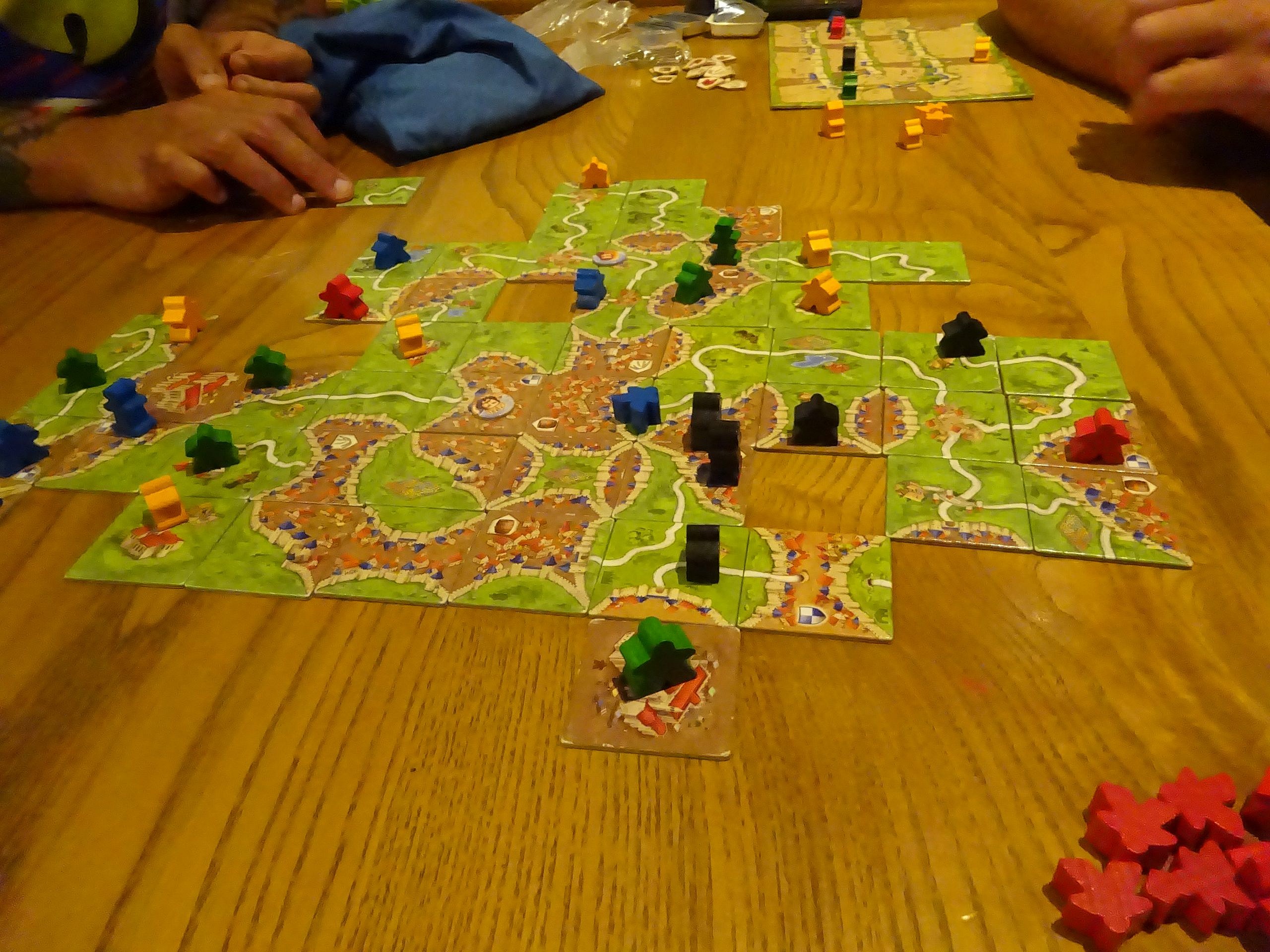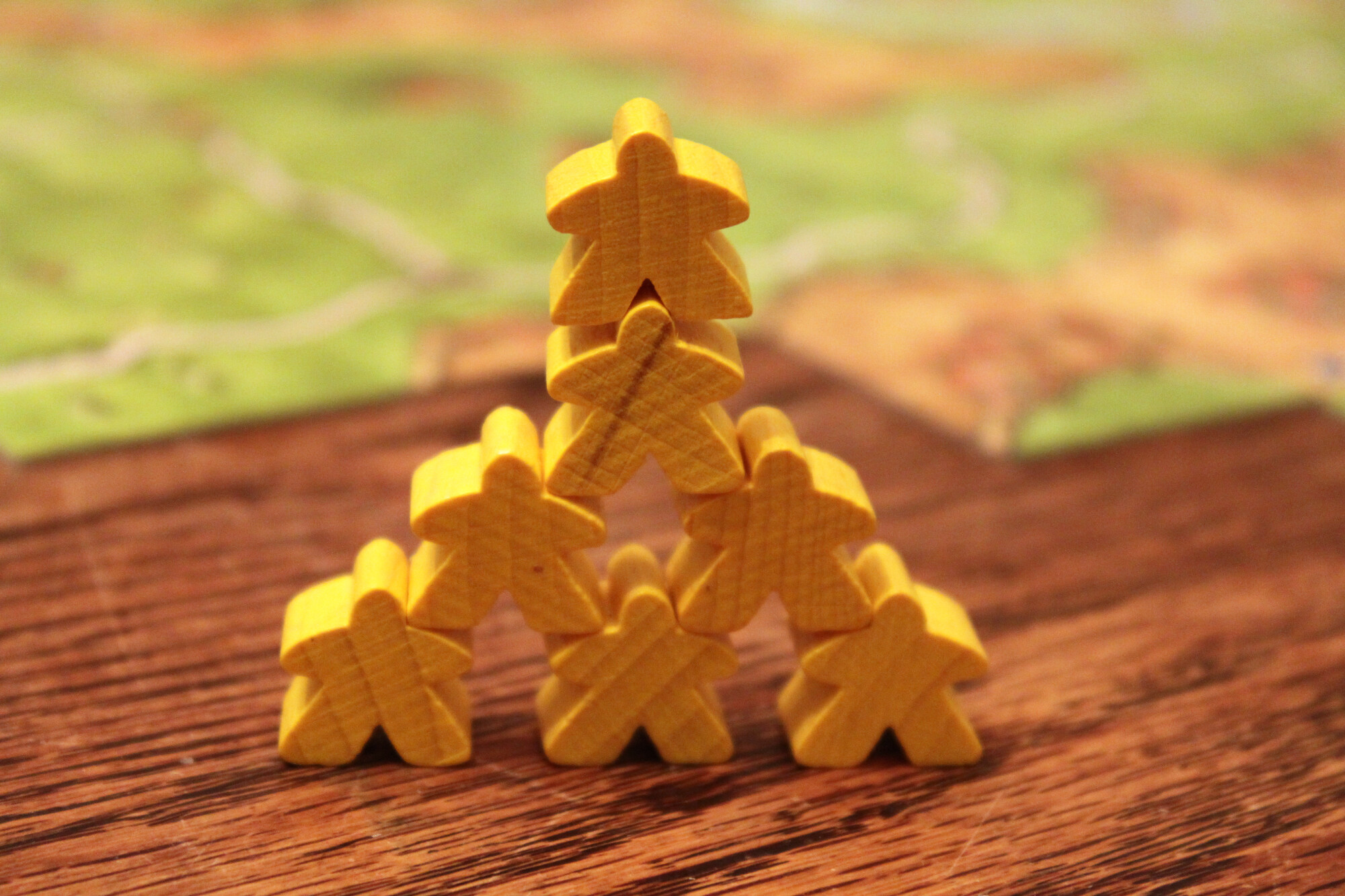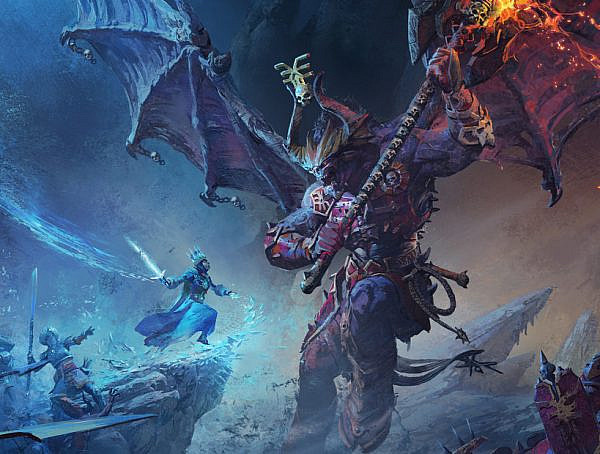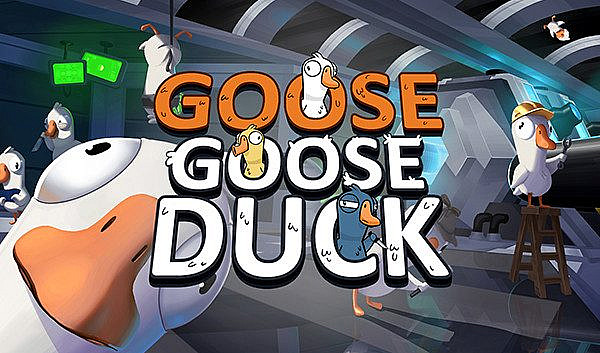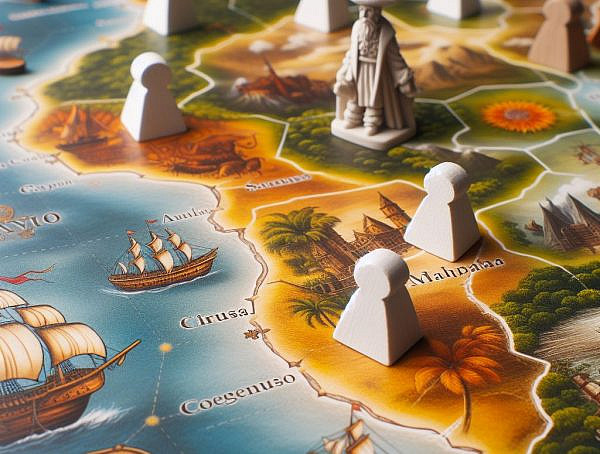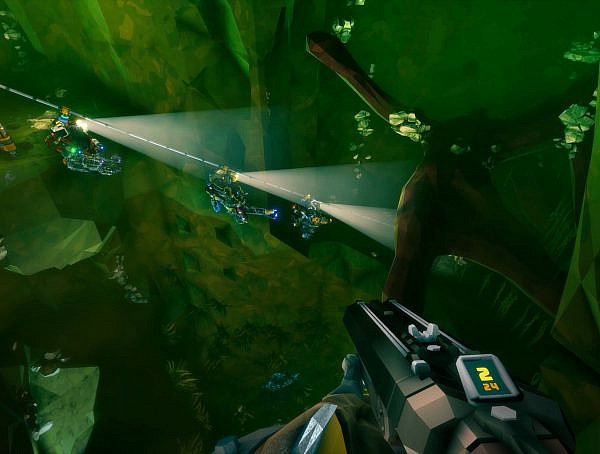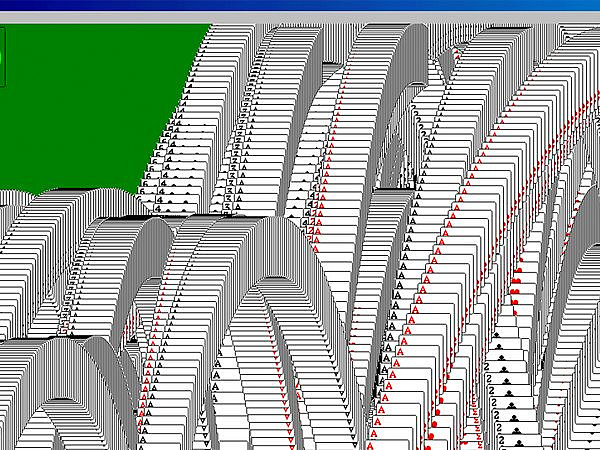Battling over land, challenging other players’ castle building, or simply snatching away the field they were looking for; Carcassonne has a lot of ways where the players can affect each other. And this is where I have found the most fun in the game of Carcasonne. Ruining other player’s games; it’s a big part of winning in Carcassonne and having them try to do the same to you is a constant battle of cat and mice.
Carcassonne is a strategic board game where players take turns placing various kinds of different tiles on the playing field. The table starts empty and then randomly chosen tiles are placed one by one attached to create the world of Carcassonne. On these tiles various things are depicted, castles, roads, monasteries, and land. On these tiles the players can place their meeples/villagers on their turn. This villager will then control that said tile for as long as it takes to complete the road, castle or monastery. The completion process varies with each different tile type but is rather straightforward. Villagers placed on land can not be removed until the end of the game.
Picture 1: “Carcasonne” by tim ellis is licensed under CC BY-NC 2.0
In the base game each player has 7 villagers to use and making sure to always have one or two spare meeples is an important aspect of the game. More than that though it is about the bigger picture; how well can a player visualize the potential ways in which the map will be built in the following turns? Is your friend building a castle you want to steal? How will the map look at the very late stage of the game?
Carcassonne is a very simple game at heart. It can be taught in a matter of minutes and will be easy to grasp after a few turns of the game. However, the strategic aspect of the game is very deep, which keeps the players coming back for more once the rules are understood. And the randomness of pulling the tiles from the tile bag. The player will never know exactly how their plans will work out due to this erratic system. However, as there are plenty of tiles one should most of the time be able to find the pieces they are looking for.
I used to love this game when I was younger. I played it countless times and still think of it very fondly. One downside for me personally is that I find it a little difficult playing with people who have not played the game much. A similar skill level will make the game so much more enjoyable for everyone involved and for this reason I rarely give Carcassonne a go these days. The game also has a large number of expansions, 10 larger ones, and a couple dozen smaller ones. These add to the depth of the game very nicely and provide good variance for a more seasoned player. Carcassonne is an excellent game but not the easiest to master!
picture 2: “Carcassonne Meeple Pyramid” by oosp is licensed under CC BY-SA 2.0
GAME INFO:
Designer: Klaus-Jürgen Wrede
Publisher: Hans im Glück
Released: 2000
Number of players: 2-5
Playtime: Box says 30, but add a couple of expansions, competitiveness and rarely a game of Carcassonne will last under 90 minutes
Age: 7+
Pictures used for the article:
Title picture: “meeples” by JudeanPeoplesFront is licensed under CC BY-NC-ND 2.0
You might also like
More from Game Reviews
Mining, Mayhem, and Bugs: A Deep Rock Galactic Review
Fight monsters, mine riches, and cause chaos with your dwarf crew — welcome to Deep Rock Galactic!
Microsoft Solitaire: classic games to kill time
Perhaps the most played games in offices worldwide, Microsoft Simulator is a pinacle of design from the era where games …
Reviewing Elden Ring amidst Elden Ring Nightreign hype
Elden Ring Nightreign is coming soon, so now might be a great time to take a another look at Elden …







